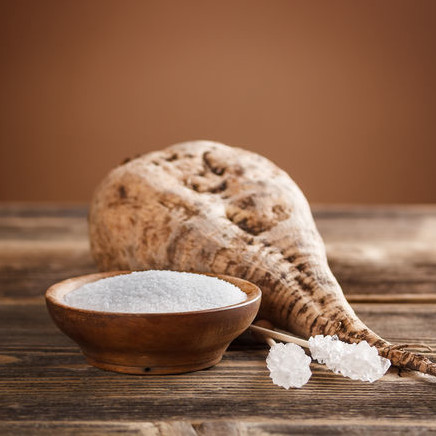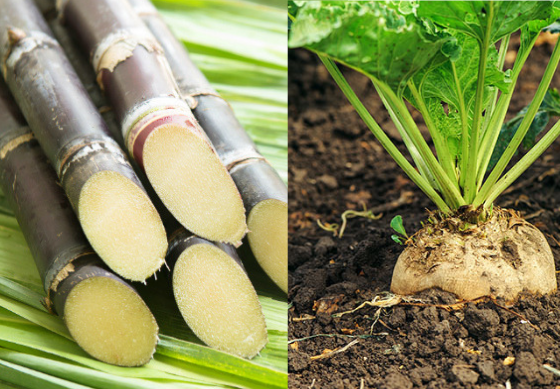The sourcing of beet sugar vs cane sugar affects environmental sustainability in the sugar industry.
Discovering the Distinctions in operation and Advantages In Between Beet Sugar Vs Cane Sugar
In the cooking world, the choice in between beet sugar and cane sugar is not merely about sweetness yet includes a nuanced consideration of taste, application, and impact. While both sugars stem from various plants, each goes through distinct manufacturing processes that discreetly affect their qualities and viability for various dishes.
Origins and Production Processes of Beet and Cane Sugar

Walking cane sugar, on the other hand, comes from the sugarcane plant, an exotic grass indigenous to Southeast Asia now grown in tropical zones worldwide. The manufacturing of cane sugar starts with the harvesting of cane stalks, which are squashed to launch the juice. This juice is then steamed to focus it, after which it is rotated in centrifuges to generate raw sugar crystals. These crystals are further improved to create the white sugar frequently readily available in stores.

Nutritional Material and Health And Wellness Considerations

When contrasting the nutritional content of beet sugar and cane sugar, it comes to be apparent that both types basically give the exact same caloric values, with around 16 calories per teaspoon and no considerable nutrient diversity. Each is composed nearly completely of sucrose, which is an easy carbohydrate that uses fast energy yet lacks vitamins, minerals, or fiber. This resemblance includes their effect on wellness, specifically concerning blood sugar levels. Both sugars, when consumed in excess, can add to raised blood sugar degrees, a risk element for diabetes mellitus and other metabolic conditions. Too much consumption can lead to weight gain and oral problems, as both sugars are similarly cariogenic, advertising tooth degeneration. From a health and wellness point of view, regulating consumption of any kind of sugar, whether from beet Your Domain Name or cane, is suggested to prevent these prospective unfavorable effects on well-being. Hence, neither holds a distinct benefit over the various other in regards to health benefits.
Taste Accounts and Culinary Applications
Regardless of their similar chemical structures, beet sugar and cane sugar differ discreetly in flavor, which can influence their use in different cooking contexts. Walking stick sugar usually lugs a tip of molasses, also in its refined kind, lending a cozy, caramel-like undertone that enhances baked goods, coffee, and chocolate-based recipes. This mild molasses flavor is specifically valued in the cooking sector for adding depth to sugary foods and breads. On the various other hand, beet sugar is characterized by its discover this info here extremely improved, neutral preference, making it a functional sweetener that does not alter the flavor accounts of dishes. This nonpartisanship is particularly beneficial in delicate dishes, such as light pastries, lotions, and some sauces, where the fundamental tastes of other ingredients are intended to stand apart. Chefs and food manufacturers could select one kind of sugar over the various other based on the desired flavor outcome of their culinary developments.
Environmental Impact and Sustainability
While both beet and cane sugars are derived from plants, their environmental influences vary considerably due to the unique approaches of growing and handling required for each. Sugar beet farming commonly involves substantial automation, which can increase fossil gas intake and carbon exhausts.
Additionally, the handling of sugarcane frequently produces a substantial quantity of waste, including bagasse, which, although usable as biofuel, regularly adds to air contamination if melted inefficiently. Sugar beet handling utilizes even more of the raw products, causing less waste. Both markets face obstacles in minimizing their environmental footprints, yet recurring developments in agricultural practices and waste monitoring are aiming to improve sustainability.
Economic Aspects Affecting the Sugar Industry
The economic characteristics of the sugar industry are considerably affected by worldwide market demands and profession plans. In regions where sugarcane or sugar beet manufacturing is subsidized, producers might have a financial advantage that enables them to supply lower rates on the international market.
In addition, fluctuations in worldwide demand for sugar, affected by dietary fads and industrial usage in food items, directly effect prices and production degrees. beet sugar vs cane sugar. Weather additionally play an essential duty, as they can significantly impact crop yields and, subsequently, the supply chain. This irregularity introduces a degree of economic uncertainty that can cause financial investment volatility in sugar production industries, affecting decisions from growing to market approach
Verdict
Finally, both beet and cane sugar have one-of-a-kind qualities that suit different cooking requirements. While cane sugar imparts a rich flavor suitable for enhancing baked goods, beet sugar's neutrality is visit the website excellent for lighter recipes. Nutritional similarities notwithstanding, their distinct production processes and ecological effects add complexity to the choice in between them. Therefore, recognizing these differences helps cooks and consumers make informed decisions that align with their health, cooking, and ethical choices.